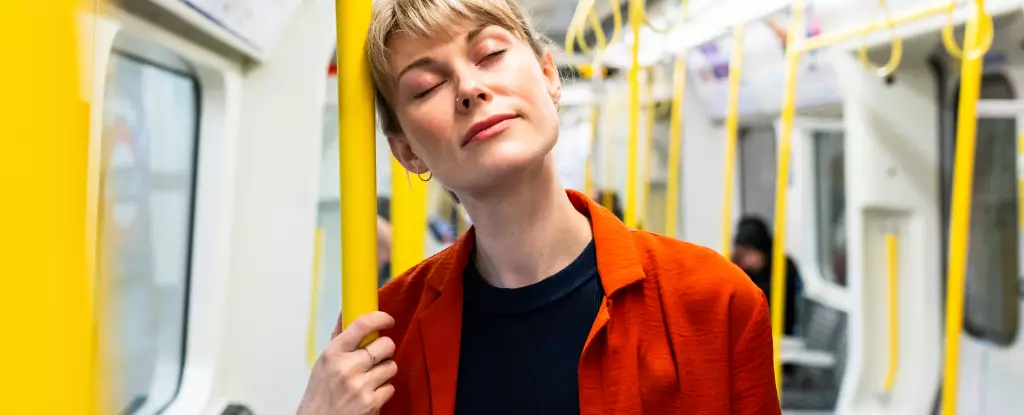The routine of daily life can often feel like a monotonous cycle: alarm clocks go off, the morning darkness feels unyielding, and a chilling cold hangs in the air. Parents hastily gather their children for school, professionals prepare for demanding workdays, and overbearing to-do lists loom larger by the minute. This seemingly never-ending grind threatens to dull our senses, rendering life bland and uninspiring. However, there exists a potent antidote to the monotony of daily living: the concept of psychological richness, which can transform even the most mundane experiences into opportunities for cognitive and emotional engagement.
Emerging from the field of positive psychology, psychological richness is distinct from the more commonly discussed notions of happiness and meaning in life. Instead, it refers to the capacity to experience a diverse array of emotions, challenges, and stimuli that can enrich our cognitive landscape. Psychological richness invites individuals to engage more deeply with their surroundings, allowing for a broader appreciation of life’s intricacies and offering an alternative pathway to fulfillment.
Research conducted in collaboration with psychologists emphasizes the allure of experiences that stimulate the mind and present challenges. Many individuals express a preference for a psychologically rich life filled with ebb and flow over a simplistic existence marked only by happiness or conventional meaning. This revelation pushes us to consider why psychological richness matters and how it can be woven into the very fabric of our daily existence.
Although empirical research yields fascinating data regarding psychological richness’s merits, the philosophical implications of this concept warrant deeper exploration. The essence of why psychological richness enhances human life often resides not in measurable outcomes, but in the intrinsic interest it can ignite. Drawing from philosophical inquiries, it becomes evident that adopting a mindset geared towards curiosity, creativity, and an evolved form of mindfulness can help elevate even the most humdrum experiences.
The perspective of “mindfulness 2.0,” as discussed in recent works, captures this transformative approach. By practicing non-evaluative awareness—where one observes their environment without immediate judgment or analysis—individuals can uncover a wealth of fascinating details. This newfound attention to minutiae—be it the subtle variations in a beloved houseplant or the myriad expressions of strangers during a commute—can breathe life into a monotonous day.
One of the most opportune times to practice this enriched form of mindfulness is during daily commutes, a routine often met with disengagement and boredom. Instead of defaulting to passive consumption of media or zoning out, commuters can choose to interact meaningfully with their environment. By actively engaging with the sights, sounds, and even smells around them—observing clusters of fellow commuters or the rhythmic flow of traffic—they can draw their minds into a realm of potential discovery.
For instance, one may begin to contemplate the lives of those waiting at a bus stop. Do they converse daily? Or does the unspoken bond of shared routine create a silent camaraderie? Such questions lead to deeper reflections, creating pathways for psychological engagement and curiosity. More importantly, it empowers the individual to initiate their own interesting experiences, reclaiming agency over their perceptions.
Creativity, often reserved for artists or special talents, is another key ingredient in crafting a psychologically rich life. Engagement in creative acts, whether painting a picture, experimenting with new recipes, or changing up wardrobe choices, infuses life with novelty and stimulation. By seeing creativity as a skill rather than a rare gift, individuals can unleash their innate capacity for playful innovation. Simple changes—such as varying one’s daily writing instruments or modifying a daily routine—can yield substantial benefits, resulting in a more engaging and fulfilling day-to-day existence.
Interestingly, the experiences that resonate as “interesting” can vary drastically between individuals, shaped by varying perspectives and backgrounds. Thus, what might feel refreshingly novel for one person may be entirely different for someone else. By fostering mindfulness, curiosity, and creativity, we equip ourselves to explore the world’s tapestry more deeply, and in doing so, recognize that each individual has the capability to generate their own brand of psychological richness.
A significant revelation from this exploration is that the potential to cultivate an interesting life resides not in external circumstances but within our mindset. As we engage with the world through a lens of curiosity and creativity, we simultaneously hone our capacity to experience and respond actively to our surroundings. Recognizing the good that psychological richness offers empowers us to embrace each moment as a unique opportunity for enrichment.
Ultimately, life does not have to be a dull repetitious cycle. Instead, by transforming our approach through mindfulness, curiosity, and creativity, we become architects of our own meaningful experiences, crafting a life that is not only interesting but profoundly rich. With every mindful observation and creative endeavor, we can unfurl the colorful tapestry of life, revealing layers of interest waiting to be discovered.

